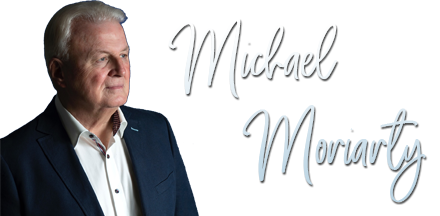The measure of intelligence is the ability to change – Albert Einstein.
The global scale of the coronavirus pandemic and its impact on lifestyles and economies is still difficult to fully comprehend and quantify. Health security has now become a worldwide priority. As governments struggle to prevent the spread of the virus there is renewed hope that the vaccination programmes, now underway in many countries, will contain the virus and bring the pandemic under control.
Covid-19 has had a tsunami-like effect on workplaces as employees were dispersed to comply with social distance requirements in order to prevent widespread contamination by the virus. To comply with government directed lockdowns all organisations and business entities were challenged to rapidly respond to the worsening pandemic crisis. Innovative capacities were tested as businesses and organisations were required to rapidly adapt to the new realities of dispersed and remote working. Leaders were challenged to cope with the potential of imminent disaster as they tried to maintain the viability of their organisations, when the pandemic first disrupted human capital management and then redefined how employees continue to function from remote or home work locations.
Shifting to remote work and virtual collaboration over a very short period of time has profoundly redefined how organisations continue to operate. Leaders were challenged to quickly implement more flexible, dispersed working arrangements by transferring most or all employees to working online. Digital transformation initiatives, which had pre-dated the pandemic, were fast-tracked to provide the necessary infrastructure to continue operations from remote work locations. In a short period of time the world of work was transformed by rapid, innovative and sustainable responses to ensure organisational viability during a devastating virus pandemic.
Remote working and home working required organisations to exploit online communication tools and collaboration platforms and these innovations also allowed leaders to devolve greater autonomy to their teams and employees. Companies and organisations across the world have successfully implemented communication and collaboration software solutions which allow groups and teams collaborate and work together in the context of new organisational policies and procedures.
Leaders and managers were challenged to provide decisive and visible leadership as well as maintaining strong relationships with employees through regular, clear and concise communications. Transparency and honesty in messaging have become more important than ever before as leaders needed to modify their styles in response to the new realities. Leaders are now encouraging enhanced team dynamics and they understand that effective two-way communication is vital for sustainability and business continuity at a time of crisis. In an online working environment leaders must demonstrate their active listening skills and openly demonstrate their empathetic nature. This is vital for maintaining team cohesiveness when team members are working from various, dispersed locations.
The unprecedented organisational change required to respond to the pandemic crisis initially required a more directive style of leadership. Leaders needed to demonstrate calm resolve by quickly implementing new operational realities and work practices. Subsequently, those same leaders needed to demonstrate different qualities such as empathy, understanding and patience as they endeavoured to remotely manage teams and employees whose working world had been completely upended. Leaders needed to show their compassionate and understanding nature, their leadership ingenuity and managerial flexibility as they acted decisively to re-establish operational stability after the sudden, powerful coronavirus pandemic shock.
The upheaval caused to operational landscapes tested all leaders to the core. The more successful leaders were those who were transparent and upfront about the organisational realities facing all employees. Leaders, working with their teams, implemented decisive, innovative responses and adopted modified business models. Innovative action and effective recovery strategies sought to minimise damage t0 operational processes while maintaining the best possible business continuity in extraordinarily difficult circumstances.
Prior to the advent of the coronavirus pandemic, agility and adaptability were recognisable buzzwords for effective change and transformation. The pandemic crisis provided such a shock that rapid change and transformation were needed just to stay afloat. Organisations were challenged to implement every possible strategy to manage financial stress, to sustain customer engagement, to maintain supply channels while overseeing workforce relocation, physically and virtually.
The coronavirus pandemic impacted on every single person and all age groups. Like previous societal challenges the pandemic brought out the best in many people. Within organisations there was a new focus on wellbeing ; there was a new realisation that we all needed to help each other. Collaboration and cooperation were in the ascendency and internal competition receded.
Leaders moved from an initial directive style of leadership to a more consensual style once the initial shock had passed. Pastoral aspects of leadership became more prevalent with the heightened focus on wellbeing. Leading virtually became the latest challenge facing leaders as they needed to stay connected with their virtual teams. The nature of work significantly changed as responsibilities were increasingly devolved. Teams and individuals with greater autonomy had to accept greater accountability and remote-working leaders had to be more trusting of those also working remotely. Despite being dispersed, team members have shown, in recent surveys, increased productivity as teamwork actually improved.
As they meet and engage in a virtual environment, employees have shown their resilience and capacity to quickly adapt to the new operational environment. In most cases they have also proven their commitment to their organisation as they engage with their team and colleagues from remote work locations. Despite competing pressures from home-schooling demands and shared workspaces many employees have shown great spirit and commitment as they overcome a multitude of challenges.
It appears also that many of those leading teams and organisations have shown a more human-centric leadership style as they lead with greater compassion and understanding of the challenges faced by employees in a fundamentally altered working environment caused by the disruptive impact of Covid-19. The best leaders have shown a high degree of social responsibility through their concern for their employees. They realise the importance of maintaining collegiality and cohesion as employees work in common cause from their homes or other remote work locations.
Leaders’ focus is also on maintaining the long-term viability of their organisations or business entities. Those which were operationally and financially strong when entering the pandemic crisis will survive post-pandemic and will benefit from the expected bounce from customers’ pent-up demand. By then, organisations will have learnt a lot about the human spirit, the impact of compassionate leadership, the benefits of collegiality and mutual support. Trusting leaders will be more supportive of wellbeing and will provide more flexible opportunities to employees to work from home, part-time or full-time.
Blended work practices, enabled by technology , is changing the nature of work. Changing work practices will also be inspired by the further development of resilient health and safety policies which recognise the benefits of healthier work practices and lifestyles. In a more blended working environment leaders will likely continue to devolve responsibility while maintaining trust and accountability. Technology has enabled organisations to meet their productivity and cost management goals while also supporting the provision of blended work practices.
While the shock of the pandemic virus has threatened entire economies across the world there will be recovery. There will also be changed work practices and leaders will have modified their styles to accommodate these new realities. The range and reliability of new technologies has greatly enhanced virtual communication and learning opportunities. Transformed work practices will change the face of leadership as remote working is mainstreamed.
Future blended work environments with flexible work practices will continue to challenge leaders to adapt to new realities with modified leadership styles. The world of work will be irrevocably changed and the role of leaders must evolve to lead their organisations through an altered work environment. The best leaders are skilled at several styles of leadership and show their agility by switching between styles to suit the prevailing circumstances. Flexibility in work practices and leadership styles is already a pre-requisite for survival in a world which is radically reformed.
A more human-centric leadership style is now far more evident as leaders show a higher degree of social responsibility through their concern for the safety of their employees. Aspiring leaders will be more challenged as they will require a greater range of leadership attributes and agility to meet fast-moving changes in a fast-moving world. More adaptive leadership styles will require leaders to quickly and intuitively know what their organisations need if they are to build sustainable business models with long-term viability. They will not do so alone and they will need to build constructive internal collaboration with their teams and colleagues that encourages a stronger sense of shared direction and inspires swift reactions to changing operational environments.
The days of the solo heroic leader have long gone to be replaced by the empathetic leader who can modify leadership styles as circumstances demand. One who can anticipate trends, who listens and hears, who cares and understands, who is adaptable and flexible, who communicates, is connected and who leads through influence will be the leader who thrives in today’s complex and volatile environment. The future belongs to those leaders who are inspiring and connected, and who share influence to achieve collective objectives in an increasingly complex and networked world. Today a reader, tomorrow a leader – Margaret Fuller.

